Keynote Speakers
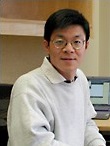
Title: Control and Optimization of Networked DERs
Abstract: The penetration of both distributed energy resources (DERs), such as photovoltaic panels, electric vehicles, and smart buildings and appliances, as well as Internet-connected sensors, computing devices and actuators is accelerating worldwide. The confluence of these two trends points to a future where there are billions of DERs, as well as information and control technologies throughout our electricity infrastructure, from generation to transmission and distribution to end use. Unlike most endpoints today which are merely passive loads, these DERs are active endpoints that not only consume, but can also generate sense, compute, communicate, and actuate. They will create both a severe risk and a tremendous opportunity: a large network of DERs introducing rapid, large, frequent, and random fluctuations in power supply and demand, voltage and frequency, and our increased capability to coordinate and optimize their operation in real time. In this talk, I will describe some of these emerging challenges and research to overcome them.
Biography: Steven H. Low is a Professor of the Department of Computing & Mathematical Sciences and the Department of Electrical Engineering at Caltech. Before that, he was with AT\&T Bell Laboratories, Murray Hill, NJ, and the University of Melbourne, Australia. He is a Senior Editor of the IEEE Transactions on Control of Network Systems and the IEEE Transactions on Network Science & Engineering, is on the editorial boards of NOW Foundations and Trends in Networking, and in Electric Energy Systems, as well as Journal on Sustainable Energy, Grids and Networks. He is an IEEE Fellow and received his B.S. from Cornell and PhD from Berkeley, both in EE.
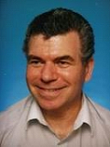
Title: Insights for network design and optimization
Abstract: Network models have been developed and analyzed for over a century, and have been applied to planning and design of telecommunication systems and networks. The general aim has been to minimize cost subject to meeting quality of service and reliability requirements. This talk will address two important networking research questions. The first is how to design a multilayer network model that considers many practical aspects, realistically sized networks with a layered architecture, stochastic traffic composed of heavy tailed flows. We aim to provide validated solutions for optimal traffic engineering, network design and evolution prediction. The second is how to optimize a topology of cabled networks considering the shapes of the cables and trading off cost savings and network resilience. This research was motivated by the 2006 Hengchun earthquake near the south coast of Taiwan and caused disruption to Internet services in many Asian countries. This was caused as a result of damage to several undersea cables located close to each other in an earthquake prone area. The aim is to optimize the shape of cables considering a range of factors including: cost, risk, geography, and ecology. Since there are multiple stakeholders with different objectives, a multi-objective optimization is used.
Biography: Moshe Zukerman is a Chair Professor of Information Engineering in the Electronic Engineering Department of City University of Hong-Kong. His research focuses on performance evaluation, resource allocation and survivable design of telecommunications networks and systems. He received B.Sc. and M.Sc. degrees from the Technion, Israel and a Ph.D. degree from UCLA in 1985. During 1986-1997 he was with Telstra Research Laboratories and during 1997-2008 with The University of Melbourne. He has served on editorial boards of various journals and on technical and organizing committees of numerous conferences. He has over 350 publications in scientific journals and conference proceedings. He is a Fellow of the IEEE.
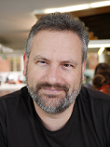
Title: A short history of Internet traffic matrices
Abstract:There are a large class of network optimization papers that begin (in subtext) with “And God gives you a traffic matrix”. These matrices form the basic input to the optimisation, but they are not at all easy to obtain. Today, it’s possible to measure your Internet traffic with tools such as Netflow, but the traffic matrix requires more than just traffic data; it requires a synthesis of traffic + routing + topology, so it is still uncommon to see real instances. This talk will describe the history of exploration of these complex beasts in the Internet, their measurement, inference, and application. And we’ll talk about our most recent work on modeling these using Maximum Entropy methods, to provide techniques for the research community to use to generate synthetic traffic matrices.
Biography: Prof. Matthew Roughan obtained his PhD in Applied Mathematics from the University of Adelaide in 1994. He has since worked for the Co-operative Research Centre for Sensor Signal and Information Processing (CSSIP), in conjunction with DSTO; at the Software Engineering Research Centre at RMIT and the University of Melbourne, in conjunction with Ericsson; and at AT&T Shannon Research Labs in the United States. Most recently, he works in the School of Mathematical Sciences at the University of Adelaide, in South Australia. His research interests range from stochastic modelling to measurement and management of networks like the Internet. He is author of over a 100 refereed publications, half a dozen patents, and has managed more than a million dollars worth of projects. In addition, his coauthors and he won the 2013 Sigmetrics "Test of Time" award, and his work has featured in New Scientist and other popular press.
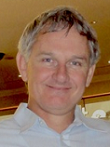
IEEE Fellow The Australia National University
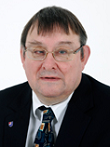
Loughborough University, UK
